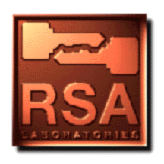

There are a vast number of alternative stream ciphers that have been proposed in cryptographic literature as well as an equally vast number that appear in implementations and products world-wide. Many are based on the use of LFSRs (see Question 89) since such ciphers tend to be more amenable to analysis and it is easier to assess the security that they offer.
Rueppel suggests that there are essentially four distinct approaches to stream cipher design [Rue92]. The first is termed the information-theoretic approach as exemplified by Shannon's analysis of the one-time pad (see Question 93). The second approach is that of system-theoretic design. In essence, the cryptographer designs the cipher along established guidelines which ensure that the cipher is resistant to all known attacks. While there is, of course, no substantial guarantee that future cryptanalysis will be unsuccessful, it is this design approach that is perhaps the most common in cipher design. The third approach is to attempt to relate the difficulty of breaking the stream cipher (where "breaking" means being able to predict the unseen keystream with a success rate better than can be achieved by guessing) to solving some difficult problem (see [BM84][BBS86]). This complexity-theoretic approach is very appealing, but in practice the ciphers that have been developed tend to be rather slow and impractical. The final approach highlighted by Rueppel is that of designing a randomized cipher. Here the aim is to ensure that the cipher is resistant to any practical amount of cryptanalytic work rather than being secure against an unlimited amount of work, as was the aim with Shannon's information-theoretic approach.
See Rueppel's article [Rue92] or any book on contemporary cryptography for examples of ciphers in each of these categories. More details are also provided in RSA Laboratories Technical Report [Rob95b].